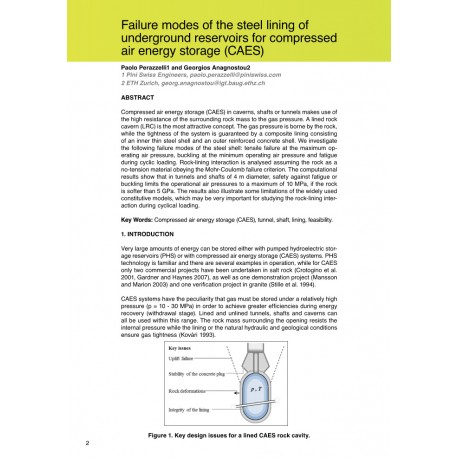Cart
0
0
No document
0,00 €
Total
Document successfully added to your shopping cart
Quantity
Total
There are 0 items in your cart.
There is 1 item in your cart.
Total documents
Total shipping
To be determined
Total
Search & filter
Search for a publication
Search & filter
Failure modes of the steel lining of underground reservoirs for compressed air energy storage (CAES)
679_failure_modes_of_the_steel_l
Compressed air energy storage (CAES) in caverns, shafts or tunnels makes use of the high resistance of the surrounding rock mass to the gas pressure. A lined rock cavern (LRC) is the most attractive concept. The gas pressure is borne by the rock, while the tightness of the system is guaranteed by a composite lining consisting of an inner thin steel shell and an outer reinforced concrete shell. We investigate the following failure modes of the steel shell: tensile failure at the maximum operating air pressure, buckling at the minimum operating air pressure and fatigue during cyclic loading. Rock-lining interaction is analysed assuming the rock as a no-tension material obeying the Mohr-Coulomb failure criterion. The computational results show that in tunnels and shafts of 4 m diameter, safety against fatigue or buckling limits the operational air pressures to a maximum of 10 MPa, if the rock is softer than 5 GPa. The results also illustrate some limitations of the widely used constitutive models, which may be very important for studying the rock-lining interaction during cyclical loading. Compressed air energy storage (CAES), tunnel, shaft, lining, feasibility.




